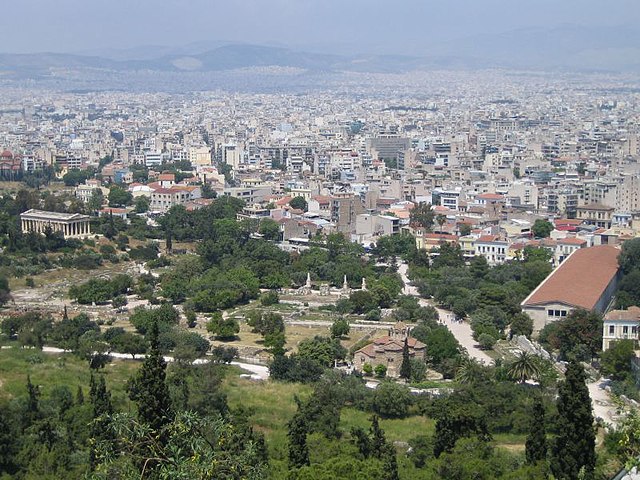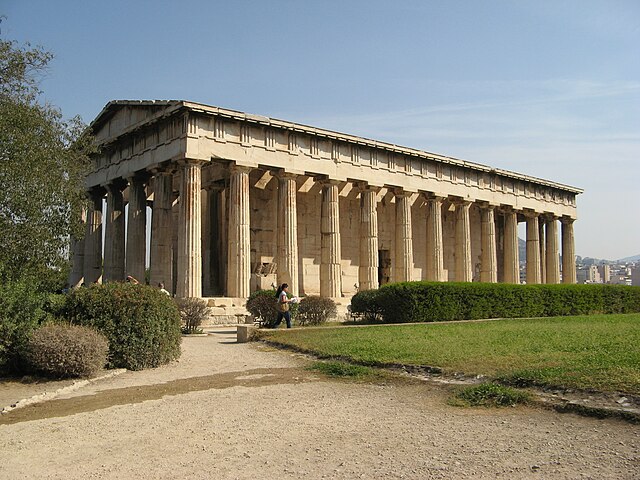The Stoa Poikile or Painted Portico was a Doric stoa erected around 460 BC on the north side of the Ancient Agora of Athens. It was one of the most famous sites in ancient Athens, owing its fame to the paintings and war-booty displayed within it and to its association with ancient Greek philosophy, especially Stoicism.
Ruins of the western end of the Stoa Poikile, seen from the southwest.
The excavated area of the northwest corner of the Agora, from the south. At right, the Stoa Poikile; in the lower foreground, the Hellenistic gate; at left, the Temple of Aphrodite Urania.
Reconstruction of the painting of the Battle of Marathon in the Stoa Poikile, after Carl Robert, Hallisches Winckelmannsprogramm (1895).
Late Roman column base on top of the west pier of the Hellenistic gate
The ancient Agora of Athens is the best-known example of an ancient Greek agora, located to the northwest of the Acropolis and bounded on the south by the hill of the Areopagus and on the west by the hill known as the Agoraios Kolonos, also called Market Hill. The Agora's initial use was for a commercial, assembly, or residential gathering place.
Ancient Agora of Athens
View of the ancient agora. The temple of Hephaestus is to the left and the Stoa of Attalos to the right.
The entrance to the Odeon of Agrippa
The Temple of Hephaestus







